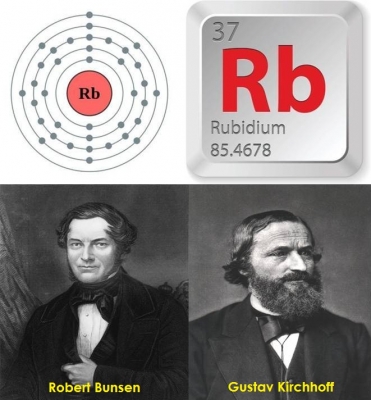
Rubidium, atomic number 37, was discovered in 1861. It was discovered in Heidelberg in Germany by Robert Bunsen and Gustav Kirchhoff using spectroscopy. This method was invented and developed by the pair in the previous two years. At the heart of the spectroscope there is a glass prism, which splits the light coming from a flame into a spectrum. This is very similar to how raindrops can split sunlight into a rainbow.
When different salts were placed in the flame of the recently invented Bunsen burner, Bunsen and Kirchhoff saw coloured lines in all the spectra they saw. What was more exciting was that they discovered that these coloured lines were unique to the substance that was burnt. They concluded that the lines in a spectrum were a way of finger-printing an element.
In 1861, the duo began studying the mineral lepidolite (a lithium, potassium and aluminium silicate). This mineral was found in Saxony, Germany. Bunsen and Kirchoff used hydrochloroplatanic acid to isolate potassium chloroplatinate from the mineral. In potassium chloroplatinate that was isolated, they found another salt. This salt produced a spectrum containing many new lines when it was placed in the Bunsen burner. Two of the lines that were produced were particularly outstanding. It was a new element. They named this new element rubidium (and the symbol Rb) from the Latin word rubidius, which refers to the darkest red colour.
Picture Credit : Google




